
Free plans to build an open drawer base for media wall from Ana-White.com

Preparation
1 - 1/4 sheet of 3/4” hardwood plywood - or can use pine boards 1x8s for sides
2 - 1x2 @ 8 feet long
2 - 2x2 @ 8 feet long
1 - 1x4 @ 8 feet long
1 - 1x6 @ 3 feet long
1 1/4” and 2 1/2” PH screws
2 - 3/4” plywood 7 1/4” x 21” (could also use 1x8s for these)
4 - 1x2 @ 27 1/2”
4 - 2x2 @ 7 3/4”
2 - 2x2 @ 26”
2 - 2x2 @ 18”
1 - 3/4” plywood @ 29” x 21 1/2” (top)
DRAWER
2 - 1x4 @ 25”
2 - 1x4 @ 20”
1 - 1x6 @ 27 1/4”
Back is optional - 7 1/4” x 29”
Please read through the entire plan and all comments before beginning this project. It is also advisable to review the Getting Started Section. Take all necessary precautions to build safely and smartly. Work on a clean level surface, free of imperfections or debris. Always use straight boards. Check for square after each step. Always predrill holes before attaching with screws. Use glue with finish nails for a stronger hold. Wipe excess glue off bare wood for stained projects, as dried glue will not take stain. Be safe, have fun, and ask for help if you need it. Good luck!
Instructions
Step 1
Step 4
Step 6
Step 7
It is always recommended to apply a test coat on a hidden area or scrap piece to ensure color evenness and adhesion. Use primer or wood conditioner as needed.




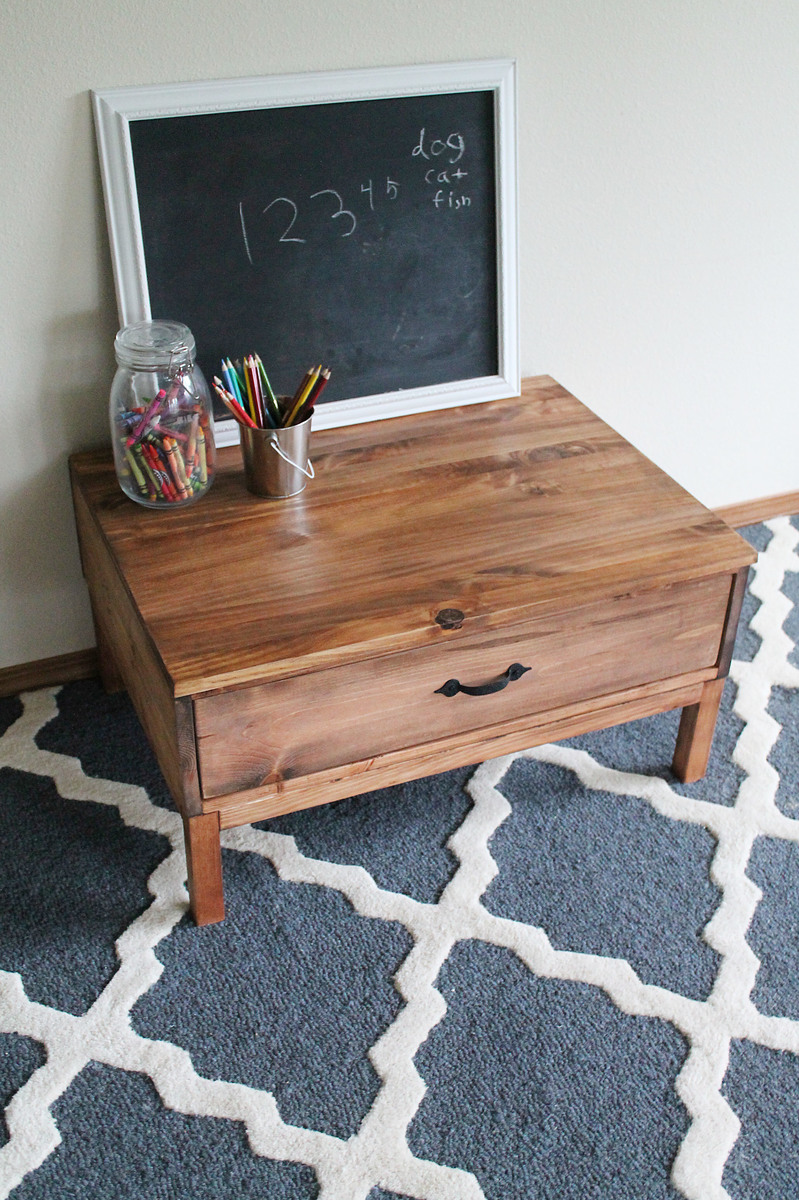
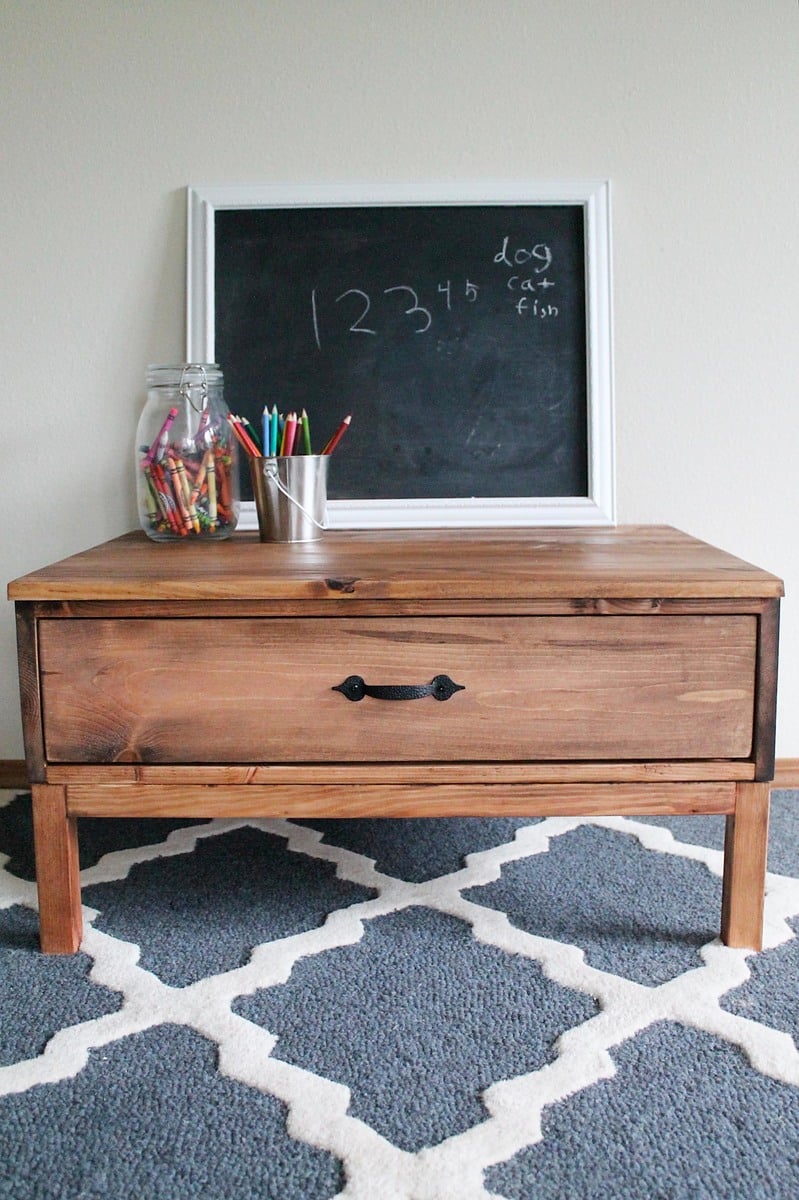
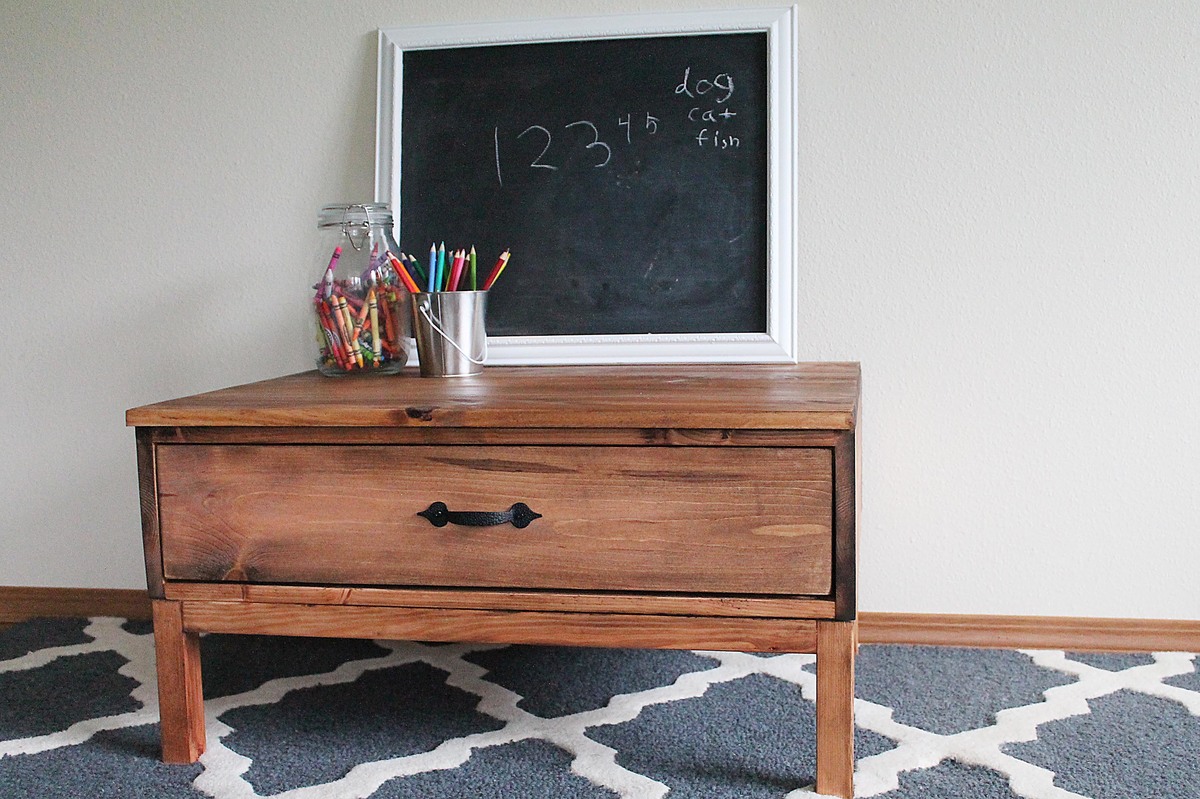


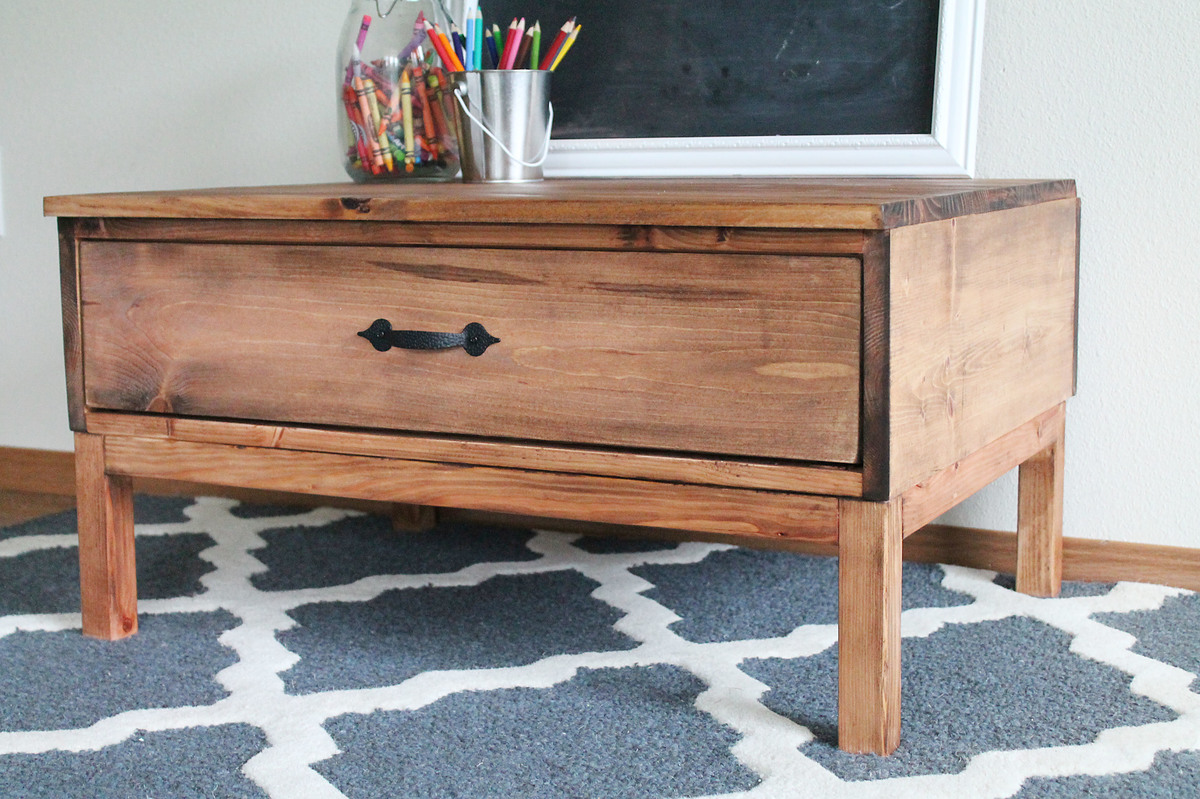
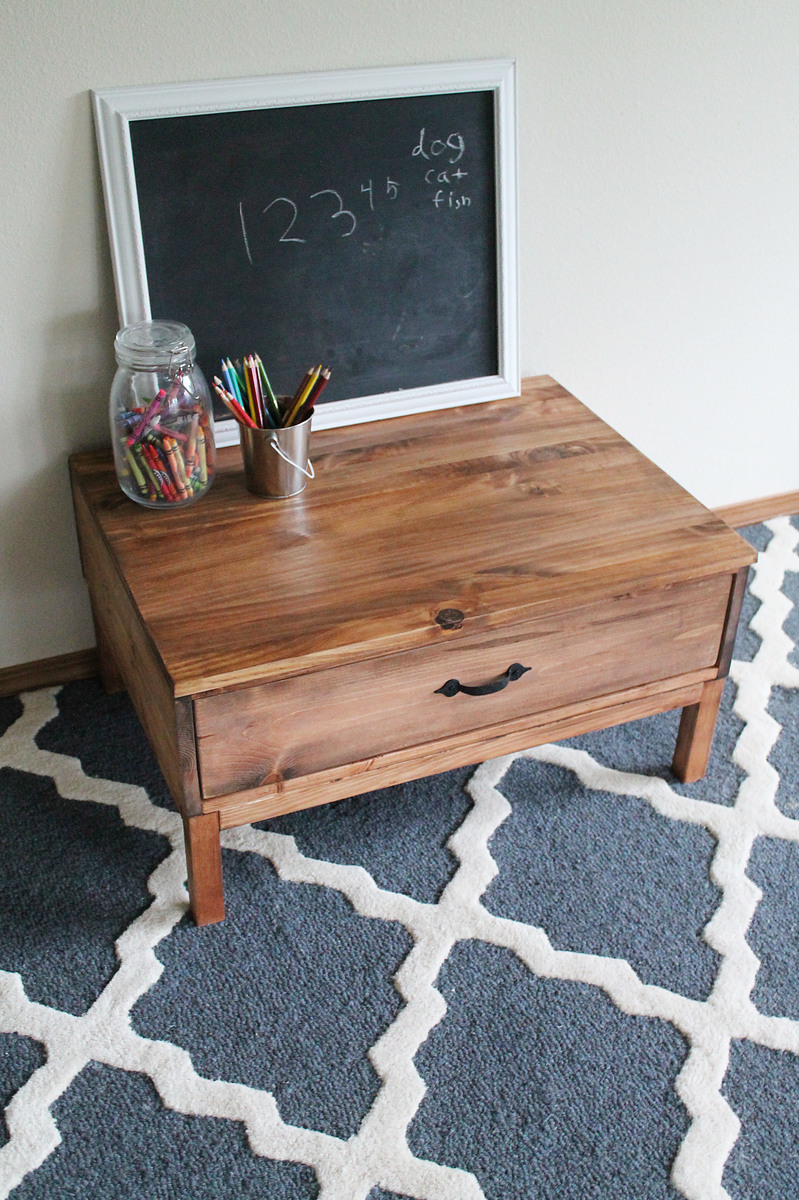










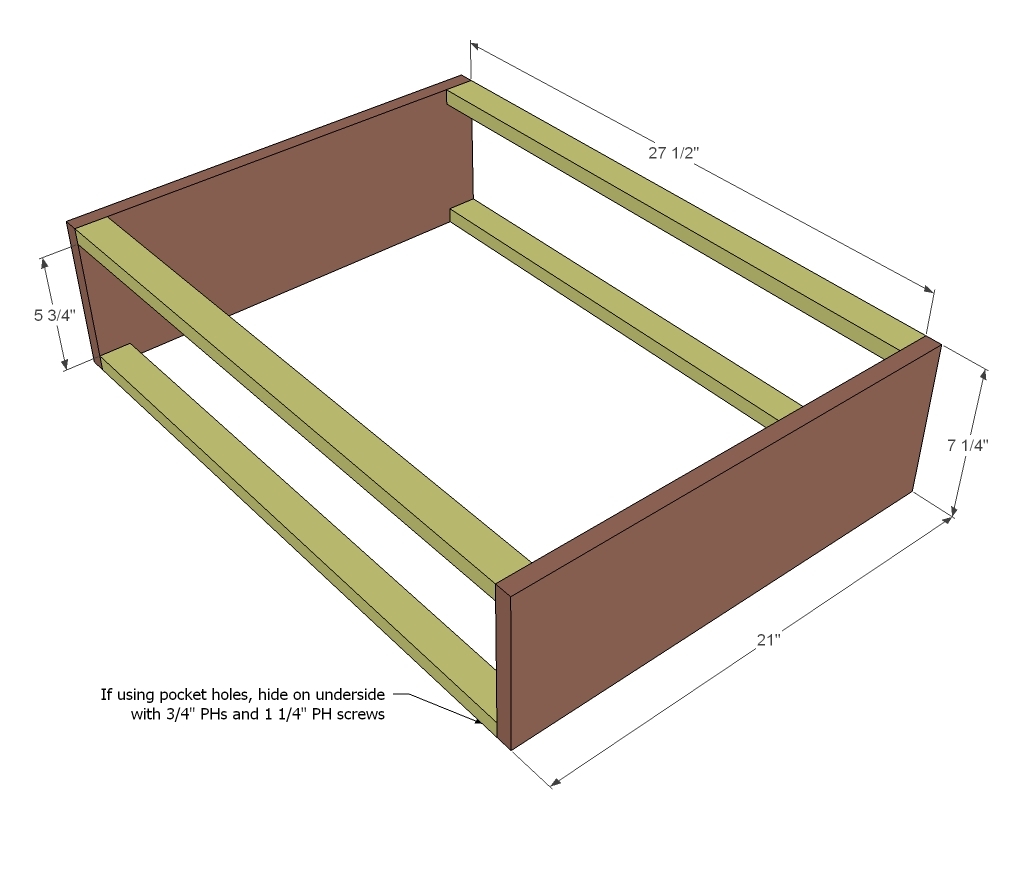
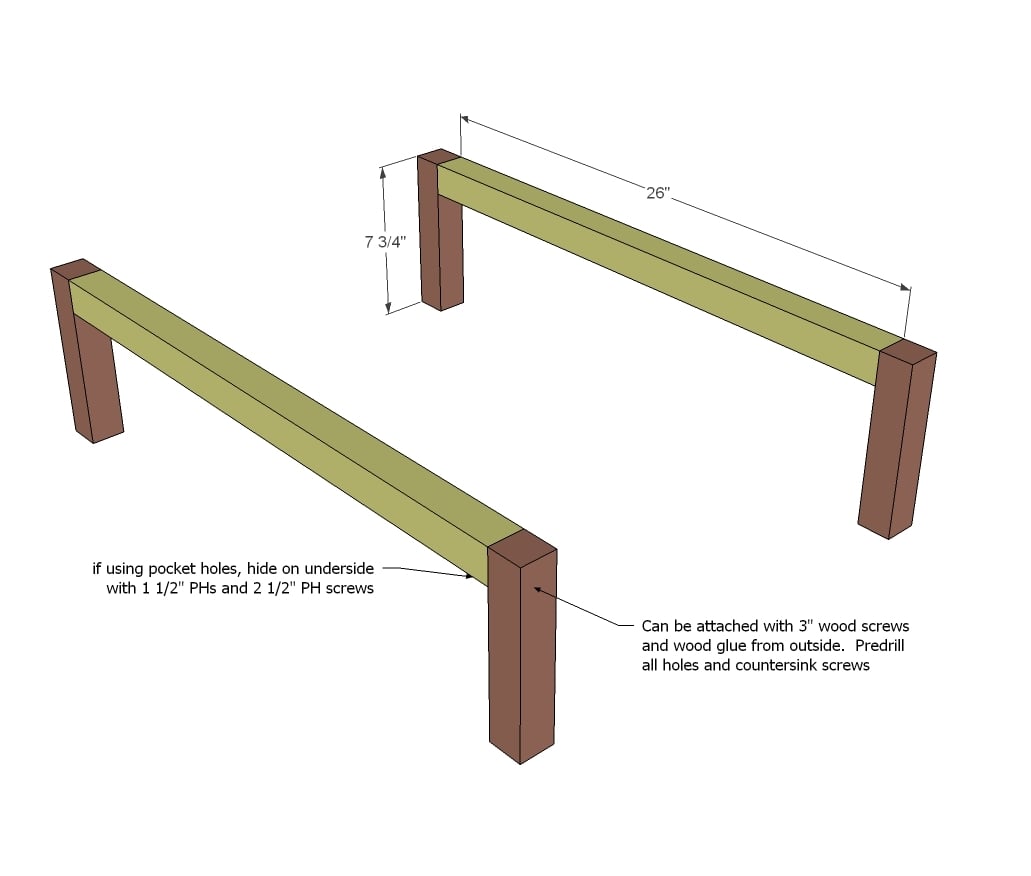






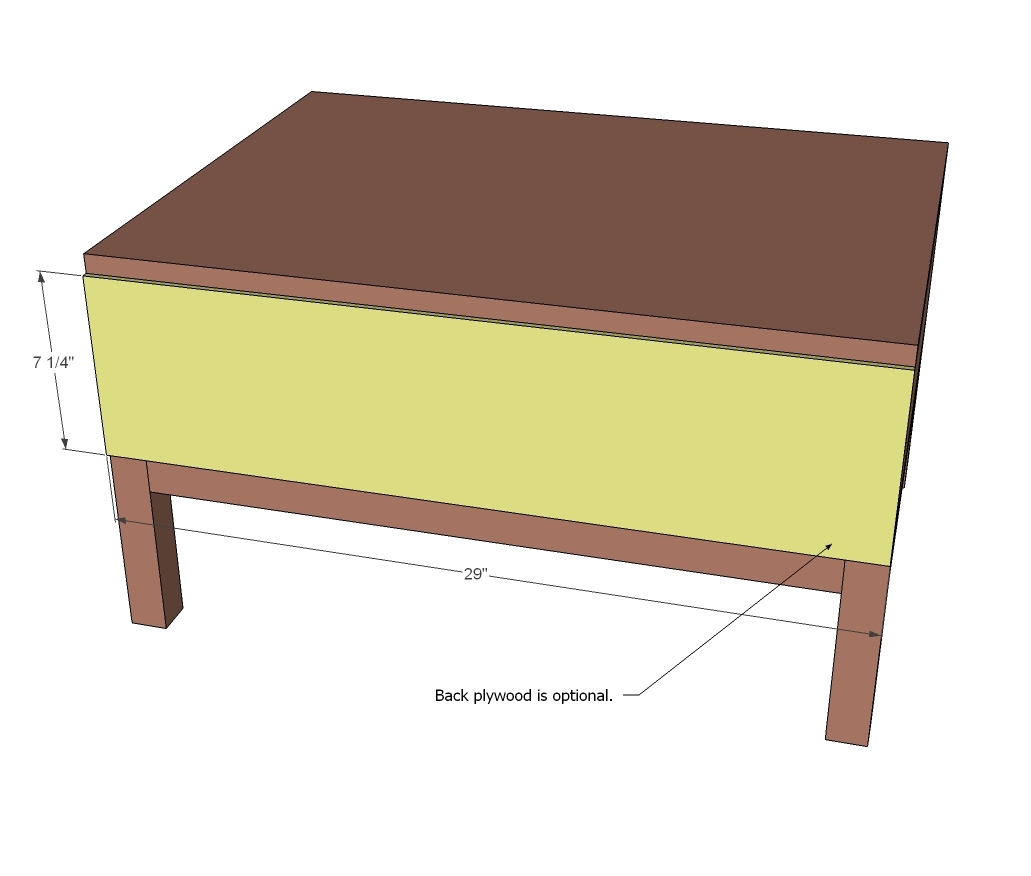
Comments
whitney_smith
Tue, 12/04/2012 - 09:30
<3
I am smitten with the finish AND that rug!!!!!!!!
JHodge (not verified)
Sun, 12/30/2012 - 19:36
I don't see info on the
I don't see info on the finish yet...is that coming?